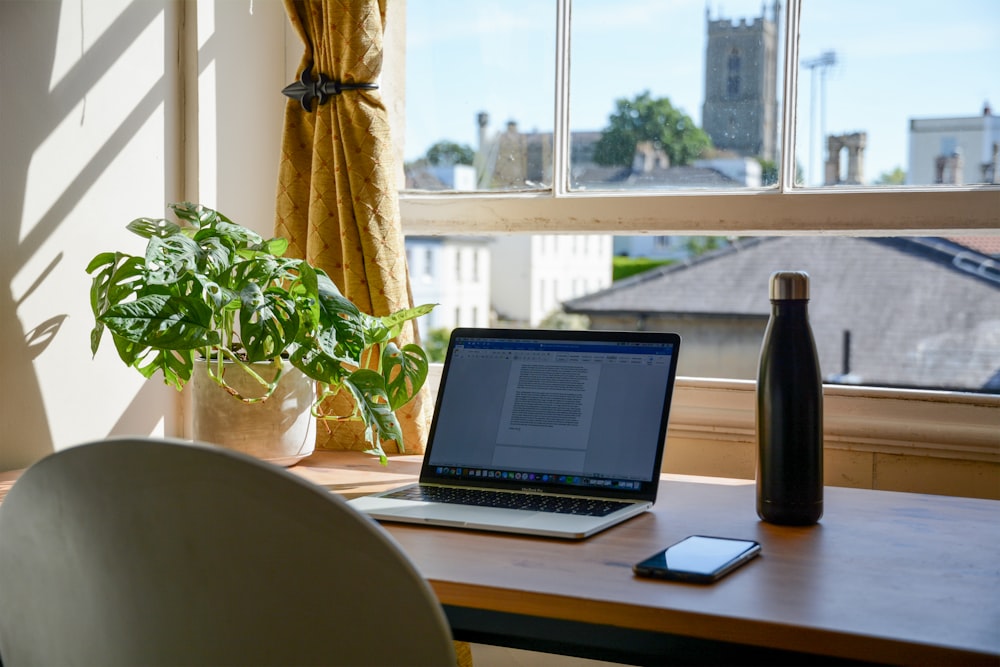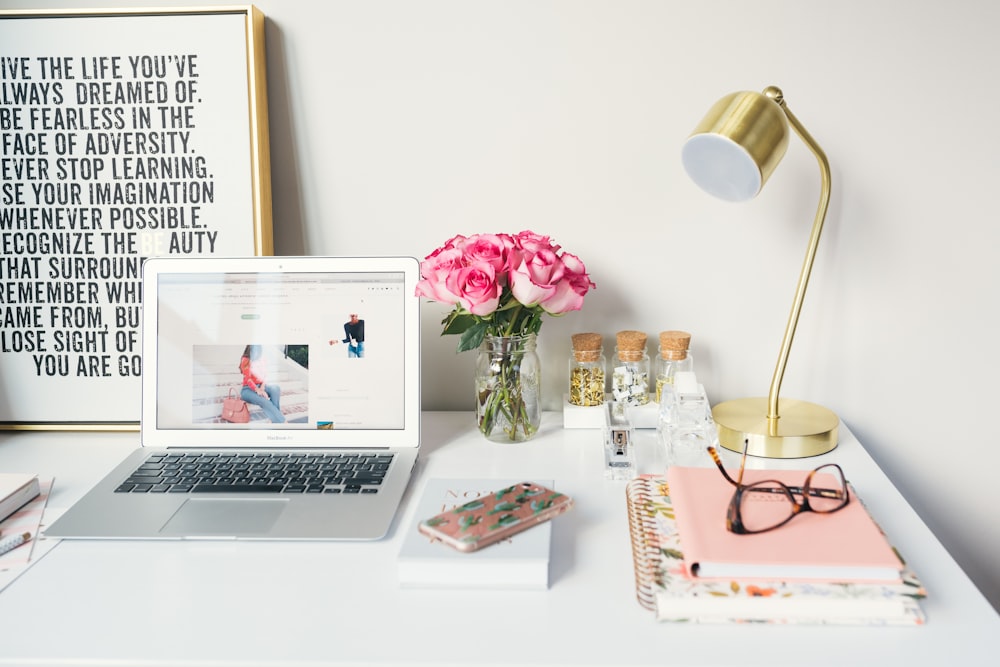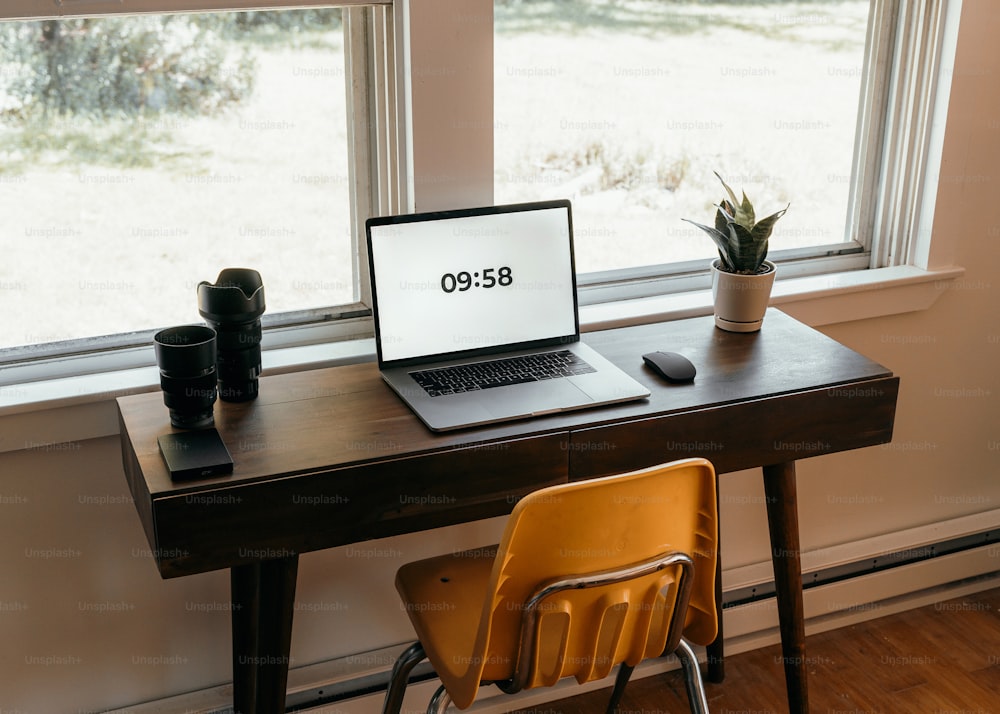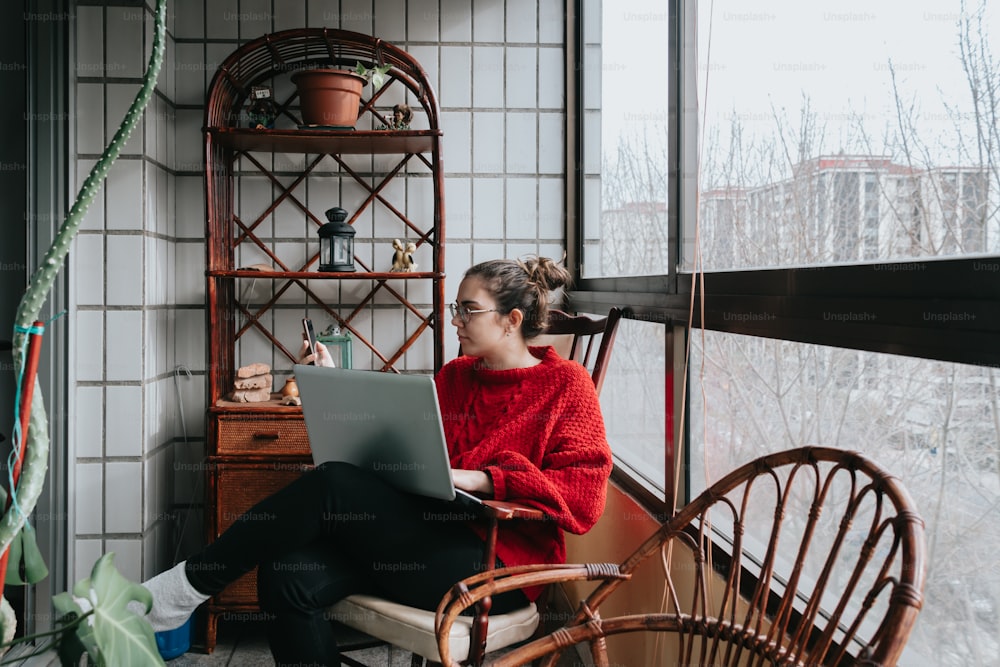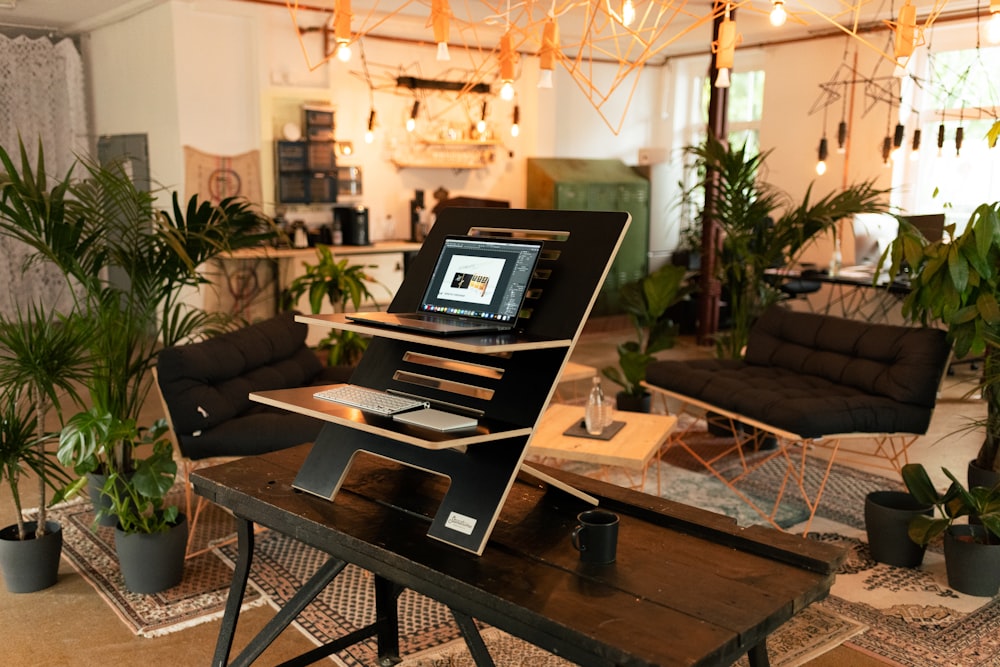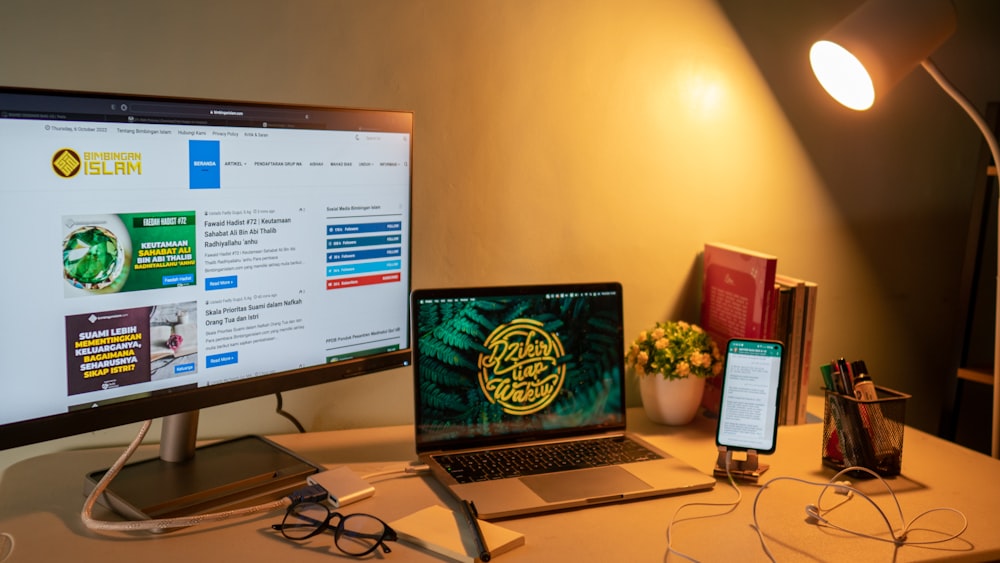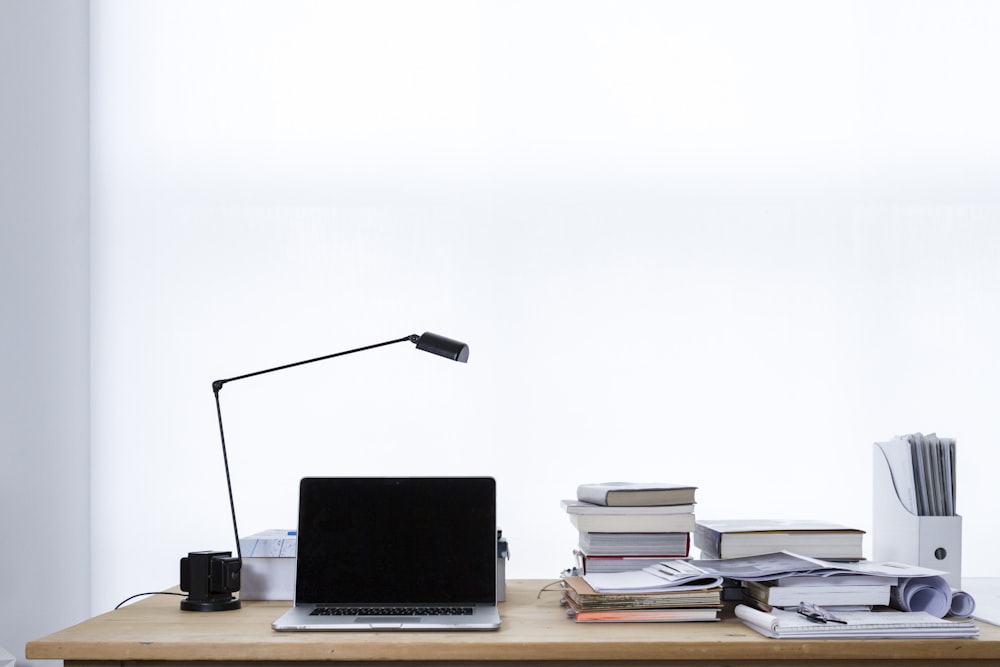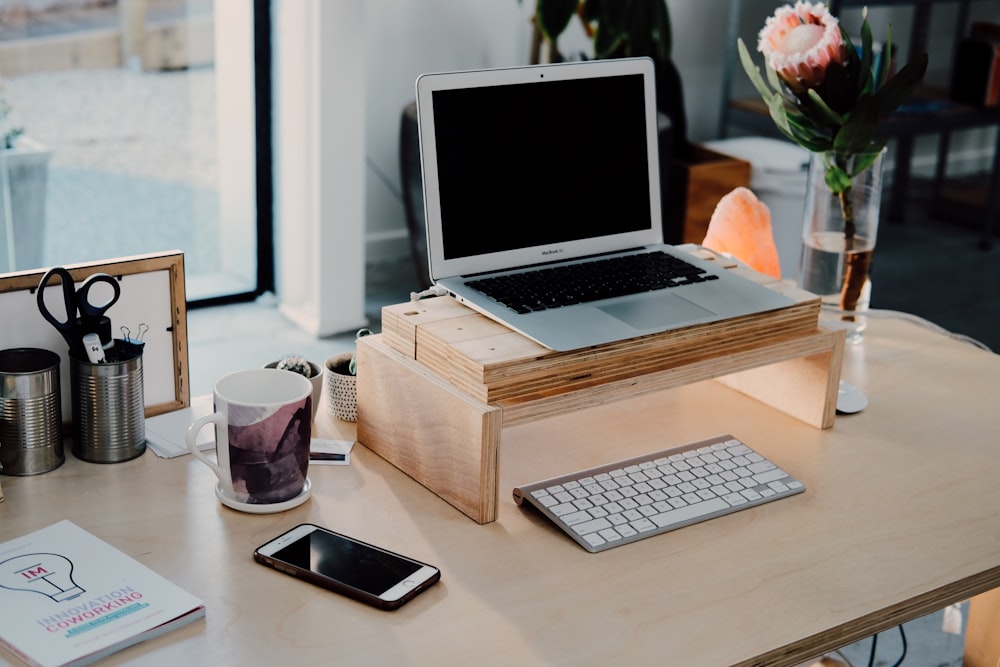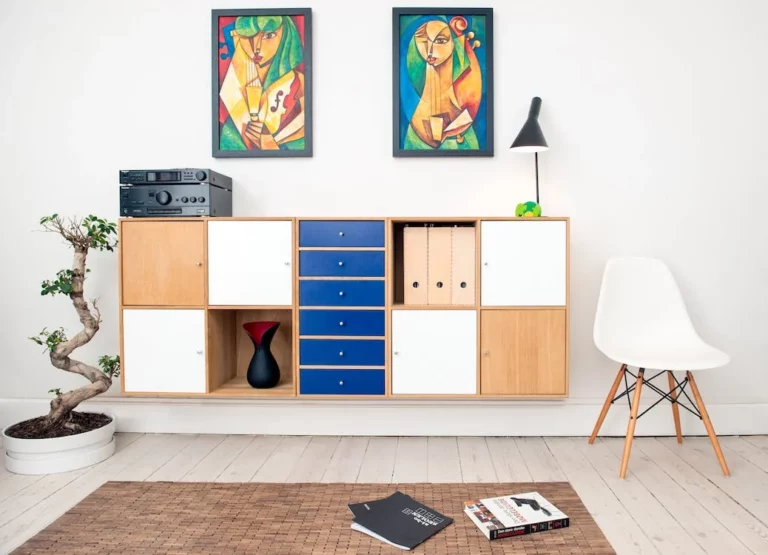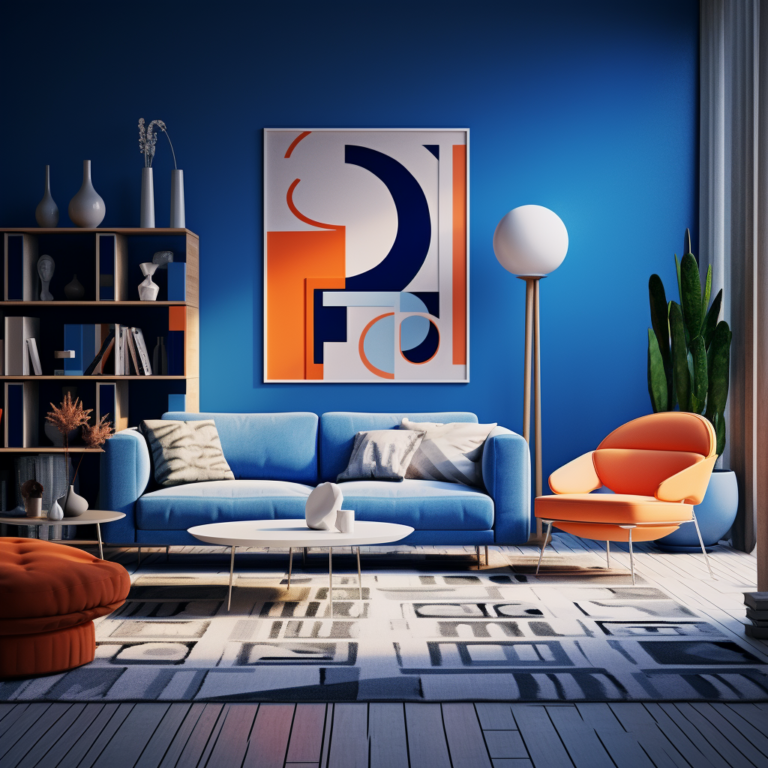Designing a Functional and Stylish Home Office : Ideas for Homeowners in 2023
Working from home has become increasingly common in recent years, with many people discovering the benefits of a flexible work environment. One key aspect of a productive home office is the design and layout of the space. A well-designed home office not only enhances productivity but also creates a stylish and functional environment.
In this article, we will explore various ideas and tips to help homeowners design a functional and stylish home office. Whether you have a dedicated room or a small corner, these ideas will help you maximize your productivity and create a space that inspires and motivates you.
Let’s dive into the key considerations and design elements that can transform your home office into a productive and stylish workspace. From choosing the right space to incorporating inspiring elements and integrating technology solutions, we will cover it all. So, let’s get started and design the perfect home office that suits your needs and reflects your personal style!
Table of Contents
- 1 Choosing the Right Space
- 2 Selecting Ergonomic Furniture and Equipment
- 3 Creating an Organized Work Environment
- 4 Incorporating Inspiring and Motivating Elements
- 5 Setting Up Proper Lighting
- 6 Creating layout of a Functional and Stylish Home Office
- 7 Integrating Technology Solutions
- 8 Ensuring Privacy and Distraction-Free Zone
- 9 Creating a Comfortable and Healthy Workspace
- 10 Conclusion
- 11 Frequently Asked Questions
Choosing the Right Space
When it comes to designing a functional and stylish home office, one of the first steps is to choose the right space. It’s important to assess the available areas in your home and consider factors such as natural lighting and noise levels. Here are some tips to help you select the perfect space for your home office:
- Assessing Available Areas in Your Home: Take a look around your home and identify areas that could potentially be transformed into a home office. It could be a spare room, a corner in your living room, or even an unused closet. Consider the size of the space and whether it can accommodate all the furniture and equipment you need.
- Considering Natural Lighting: Natural lighting can have a significant impact on your productivity and overall mood in the home office. Look for a space that receives ample natural light during the day. Positioning your workspace near a window is ideal as it allows you to enjoy the benefits of natural light while working.
- Evaluating Noise Levels: Noise levels can also have a considerable effect on your ability to focus and concentrate. Choose a space in your home that is away from high-traffic areas or areas with excessive noise. If you can’t avoid noise entirely, consider using noise-canceling headphones to create a more peaceful working environment.
Remember, the right space for your home office should be a quiet and well-lit area that allows you to work comfortably and efficiently. By assessing available areas in your home, considering natural lighting, and evaluating noise levels, you can find the perfect spot for your home office.
Selecting Ergonomic Furniture and Equipment
When designing your home office, it’s important to prioritize comfort and functionality. After all, you’ll be spending a significant amount of time in this space, so you want to make sure you have the right furniture and equipment to support your work. Here are some key considerations when selecting ergonomic furniture and equipment for your home office:
Ergonomic Desk and Chair
Investing in a quality ergonomic desk and chair is essential for maintaining good posture and reducing the risk of back and neck pain. Look for an adjustable desk that allows you to switch between sitting and standing positions throughout the day. Pair it with an ergonomic chair that provides proper lumbar support and allows you to adjust the height, backrest, and armrests.
Monitor and Keyboard Setup
Proper positioning of your monitor and keyboard can help prevent eye strain and repetitive strain injuries. Your monitor should be positioned at eye level, about an arm’s length away from you. Consider using a monitor stand or an adjustable monitor arm to achieve the ideal height. Similarly, your keyboard should be placed at a comfortable height and distance from your body to avoid wrist and hand discomfort. A keyboard tray or an ergonomic keyboard can help with this.
Proper Lighting and Task Illumination
Good lighting is essential for productivity and reducing eye strain. Make sure your home office has adequate natural lighting. Position your desk near a window to take advantage of natural light and minimize the need for artificial lighting during the day. To supplement natural light or for evening work, invest in task lighting with adjustable brightness and color temperature. This will provide you with optimal lighting for focused work.
Storage Solutions
A clutter-free workspace is essential for maintaining focus and staying organized. Consider incorporating storage solutions that keep your essentials within reach. Opt for a filing cabinet or drawer system to store important documents. Use desk organizers and shelves to keep your supplies neatly arranged. By having a dedicated place for everything, you’ll be able to maximize your productivity and minimize distractions.
Remember, ergonomic furniture and equipment are designed to support your body and enhance your comfort while working. By investing in these essentials, you’ll create a workspace that promotes productivity and reduces the risk of discomfort or injury. Take the time to research and find the right ergonomic solutions that suit your specific needs and preferences. Your body will thank you for it!
“Ergonomic furniture and equipment are essential for maintaining good posture, reducing the risk of discomfort or injury, and enhancing productivity in your home office.”
Creating an Organized Work Environment
When designing a home office, creating an organized work environment is crucial to boosting productivity and maintaining focus. An organized workspace not only helps you stay on top of your tasks but also creates a visually appealing and clutter-free area. Here are some tips to create an organized work environment in your home office:
Smart Storage Solutions
Having proper storage solutions is key to keeping your workspace organized. Consider investing in functional and stylish storage options, such as:
- File cabinets: Store important documents and paperwork in labeled file cabinets for easy access and organization.
- Shelves and bookcases: Display books, reference materials, and decorative items on shelves and bookcases to add visual appeal while keeping them within reach.
- Desk organizers: Use desk organizers like penholders, trays, and drawers to keep small items such as pens, paper clips, and sticky notes organized and easily accessible.
- Wall-mounted storage: Utilize wall space by hanging storage systems, such as pegboards or wall grids, where you can hang frequently used tools, supplies, or even inspirational quotes.
Optimizing Desk Space
A cluttered desk can be overwhelming and can hinder your productivity. To optimize your desk space and keep it organized:
- Declutter regularly: Remove unnecessary items from your desk, such as old papers, empty coffee cups, and unused gadgets. Keep only essential items within reach.
- Use cable management: Keep cables and cords organized and tangle-free with cable clips, wraps, or cable boxes. This not only makes your desk look neat but also prevents accidents and tripping hazards.
- Utilize desk organizers: Use desk organizers such as trays or drawers to keep frequently used items like pens, notepads, and sticky notes within easy reach, while keeping the surface clear and clean.
- Invest in a monitor stand: A monitor stand can help free up desk space by lifting your screen off the desk surface. This allows for more room to work and helps maintain good posture by positioning the monitor at eye level.
Wire Management
Messy cables trailing around your workspace can create a chaotic and disorganized look. To keep cables and wires under control:
- Use cable management solutions: Invest in cable management solutions such as cable sleeves, cable clips, or cable ties to bundle and hide cables together. This not only prevents them from tangling and getting damaged but also creates a clean and organized appearance.
- Label cables: Use adhesive labels or color-coded cable ties to label and identify cables for easy troubleshooting and maintenance.
- Consider a cable management box: A cable management box is a great solution to conceal and organize multiple cables and power strips. It keeps them out of sight and provides a clean and clutter-free look.
By implementing these organizational strategies, you can create an efficient and visually pleasing work environment in your home office. An organized space not only improves productivity but also enhances your overall sense of well-being. So, take the time to declutter, invest in storage solutions, and keep your desk and cables organized. Your home office will thank you for it!
Incorporating Inspiring and Motivating Elements
Creating a home office that is both functional and stylish is essential for productivity and overall satisfaction. While ergonomic furniture and proper lighting are important aspects, it’s equally crucial to incorporate inspiring and motivating elements into your workspace. These elements can help boost creativity, motivation, and focus, making your home office a place you enjoy spending time in. Here are some ideas to consider:
Color Psychology
Colors have a profound impact on our mood and emotions. Choosing the right colors for your home office can help create a conducive environment for work. Here are some color suggestions and their effects:
- Blue: Calming and promotes focus.
- Yellow: Energizing and stimulates creativity.
- Green: Associated with nature and promotes balance.
- Orange: Invokes enthusiasm and positivity.
- Purple: Encourages creativity and brings a sense of luxury.
Consider incorporating these colors into your workspace through wall paint, furniture, or decor elements to create a visually appealing and inspiring atmosphere.
Wall Art and Decor
Adding wall art and decor to your home office can immediately transform the space and make it more visually appealing. Here are some ideas:
- Hang framed artwork or photographs that inspire you, such as nature scenes or motivational quotes.
- Display a vision board to remind you of your goals and aspirations.
- Use floating shelves to display items that bring you joy, such as books, plants, or personal mementos.
- Incorporate a whiteboard or a corkboard for notes, reminders, and brainstorming sessions.
By surrounding yourself with artwork and decor that resonates with you, you’ll create a space that sparks creativity and motivation.
Indoor Plants
Adding indoor plants to your home office not only enhances the aesthetic appeal but also offers numerous benefits. Here’s why you should consider incorporating plants into your workspace:
- Improved air quality: Plants help purify the air, reducing toxins and increasing oxygen levels.
- Stress reduction: Studies have shown that being around nature and greenery can lower stress levels and improve overall well-being.
- Increased productivity: Indoor plants have been linked to increased focus and productivity.
Choose low-maintenance plants such as succulents, snake plants, or pothos that thrive in indoor environments. Place them on your desk, shelves, or hanging pots to add a touch of nature to your home office.
Personalized Touches
Adding personalized touches to your home office can make it feel more inviting and uniquely yours. Here are some ideas to consider:
- Photographs: Display photographs of loved ones or memorable moments to create a sense of connection and inspiration.
- Mementos: Showcase items or souvenirs from your travels or hobbies that hold significance to you.
- Inspiring quotes: Frame or create a collage of your favorite motivational quotes to uplift your spirits throughout the workday.
Remember that your home office is a reflection of your personality and interests, so feel free to add elements that resonate with you personally.
Incorporating inspiring and motivating elements into your home office can significantly impact your productivity and enjoyment of the space. Consider the use of colors, wall art, indoor plants, and personalized touches to create a workspace that inspires and motivates you every day. With these elements in place, you’ll find yourself looking forward to entering your home office and accomplishing your tasks with enthusiasm.
Also Read: The Art of Mixing Materials : Creative Architectural Ideas for Homeowners in 2023
Setting Up Proper Lighting
When designing a home office, proper lighting is crucial for creating a space that is not only functional but also comfortable. Good lighting can help reduce eye strain, improve productivity, and enhance the overall aesthetics of your workspace. In this section, we will explore different aspects of setting up proper lighting in your home office.
Maximizing Natural Light
Natural light is a wonderful source of illumination that can make your home office feel open and bright. Here are some tips for maximizing the natural light in your workspace:
- Position your desk near a window to take advantage of the sunlight.
- Avoid placing your desk directly in front of a window to prevent glare on your computer screen.
- Use light-colored curtains or blinds that allow light to filter through while providing privacy.
- Consider using sheer curtains or adjustable blinds that allow you to control the amount of natural light entering the room.
Choosing Task Lighting
Task lighting provides focused illumination for specific activities, such as reading, writing, or working on your computer. Here are some key considerations when choosing task lighting for your home office:
- Select a desk lamp with an adjustable arm and a shade that directs light onto your workspace.
- Opt for a lamp with a bright LED bulb that mimics natural daylight and reduces eye strain.
- Position the desk lamp on the opposite side from your writing or dominant hand to minimize shadows.
Ambient and Accent Lighting
In addition to task lighting, ambient and accent lighting can contribute to the overall ambiance of your home office. Here are some ideas to incorporate ambient and accent lighting in your workspace:
- Install overhead lights, such as recessed lighting or a pendant light, to provide general illumination in the room.
- Consider adding a floor lamp or table lamp in a corner to create a warm and cozy atmosphere.
- Use LED strip lights to highlight shelves, artwork, or architectural features in your home office.
Remember, lighting plays a significant role in setting the mood and functionality of your home office. By maximizing natural light, choosing task lighting wisely, and incorporating ambient and accent lighting, you can create a well-lit and inviting workspace that promotes productivity and comfort.
In the next section, we will explore the importance of creating a functional layout for your home office.
Creating layout of a Functional and Stylish Home Office
When designing your home office, it’s important to create a functional layout that allows for efficient workflow and productivity. Here are some tips on how to achieve this:
Efficient Traffic Flow
Consider the traffic flow in your home office to ensure easy movement and access to essential items and equipment. Arrange your furniture in a way that allows for a natural flow from one area to another, minimizing obstructions and maximizing convenience.
Separating Work and Living Areas
It’s important to create a clear separation between your work area and the rest of your living space. This helps to minimize distractions and make it easier to switch off from work at the end of the day. You can achieve this by using dividers, screens, or even positioning your office in a separate room if possible.
Flexible Furniture Arrangements
Invest in furniture that is versatile and can be easily reconfigured to adapt to your changing needs. This allows you to make adjustments as your work requirements evolve over time. Look for furniture with wheels or modular components that can be easily moved and rearranged.
Having a functional layout in your home office ensures that everything is within reach and optimizes your workflow. It allows you to work efficiently and be more productive, ultimately leading to better work-life balance.
“A functional layout in your home office can greatly enhance your productivity and efficiency.”
Integrating Technology Solutions
In today’s digital age, integrating technology into your home office is essential for productivity and efficiency. By harnessing the power of technology, you can streamline your workflow and stay connected with clients and colleagues. Here are some ideas for integrating technology solutions into your home office:
Wireless Connectivity
Having a reliable and fast internet connection is crucial for any home office setup. Make sure your home office is equipped with a high-speed internet connection and a router that supports wireless connectivity. This will allow you to connect your devices, such as laptops, smartphones, and printers, without the hassle of messy cables.
Home Office Automation
Automation can save you time and simplify your daily tasks. Consider investing in smart home devices and automating routine office activities. For example, you can use voice assistants like Amazon Alexa or Google Assistant to control your smart devices, set reminders, and schedule appointments.
Multi-screen Setup
If your work involves multitasking or requires a large amount of screen real estate, consider setting up a multi-screen setup. Having multiple monitors can increase your productivity by allowing you to view multiple documents, applications, or websites simultaneously. This is especially useful for tasks such as data analysis, graphic design, or programming.
Virtual Meeting Tools
With remote work becoming more prevalent, virtual meetings have become the new norm. Make sure you have the necessary tools for seamless virtual communication. Popular video conferencing platforms like Zoom, Microsoft Teams, or Google Meet can help you conduct virtual meetings, collaborate with team members, and share your screen. Invest in a good quality webcam, microphone, and speaker to ensure clear and crisp communication.
Integrating technology solutions into your home office can greatly enhance your productivity and make your work life easier. By embracing wireless connectivity, home office automation, multi-screen setups, and virtual meeting tools, you can create a technologically advanced workspace that meets your professional needs. Embrace the power of technology to take your home office to the next level!
Ensuring Privacy and Distraction-Free Zone
In order to create a productive home office space, it’s essential to ensure privacy and minimize distractions. Here are some tips to help you create a private and distraction-free zone:
- Soundproofing and Acoustic Solutions: One of the key factors in creating a distraction-free environment is soundproofing your home office. Noise from other parts of the house or outside can disrupt your concentration. Consider using sound-absorbing materials such as acoustic panels or soundproof curtains to reduce noise levels. These materials can help create a quieter and more focused atmosphere.
- Privacy Screens: If you are sharing your workspace with others or have an open-concept home, privacy screens can be a great solution to minimize distractions and create a sense of privacy. These screens can be easily set up around your desk or workspace, providing a physical barrier that helps to block out visual distractions and creates a dedicated work area.
- Minimizing Distractions: When designing your home office, think about what might distract you from your work. Identify potential distractions such as noise from other family members, external noises, or visual distractions like cluttered walls and surfaces. Take steps to minimize these distractions by implementing strategies such as:
- Creating a separate workspace: Set up your home office in a dedicated room or area of your home to separate your work life from your personal life. This can help create a clear boundary and reduce the chance of interruptions.
- Decluttering: Keep your workspace clean and clutter-free. Remove unnecessary items from your desk and shelves to eliminate visual distractions and create a more organized and focused environment.
- Establishing ground rules: Communicate with family members or housemates about your work schedule and the need for a quiet and distraction-free environment. Establish guidelines or boundaries to minimize interruptions during your designated work hours.
- Using noise-canceling headphones: If ambient noise is a concern, consider using noise-canceling headphones to block out external sounds and create a quieter environment.
- Setting boundaries: Let your family members know your work schedule and the importance of uninterrupted work time. Encourage them to respect your workspace and avoid unnecessary disruptions.
Remember, creating a private and distraction-free zone in your home office is essential for maintaining focus and productivity. Implementing these tips will help you design a workspace that allows you to work efficiently and effectively.
Creating a Comfortable and Healthy Workspace
In order to work efficiently and productively, it is important to create a comfortable and healthy workspace in your home office. Here are some ideas to help you achieve this:
- Adjustable Desk and Standing Options: Sitting for long periods of time can have adverse effects on your health. Consider investing in an adjustable desk that allows you to switch between sitting and standing positions. This will help reduce the strain on your back and neck, improve posture, and increase blood circulation.
- Ergonomic Accessories: Along with an adjustable desk, ergonomic accessories are essential for maintaining a healthy workspace. Use an ergonomic keyboard and mouse to reduce the risk of developing repetitive strain injuries. A wrist rest can also provide support and prevent discomfort.
- Proper Ventilation: Good air circulation is crucial for a healthy workspace. Make sure your home office has adequate ventilation by opening windows whenever possible. If natural ventilation is not sufficient, consider using a fan or an air purifier to keep the air fresh and clean.
- Maintaining Indoor Air Quality: Indoor air quality can significantly impact your health and well-being. Keep your workspace clean and free from dust and allergens. Regularly vacuum or dust your office area, and consider using an air purifier to remove pollutants from the air.
By creating a comfortable and healthy workspace, you can enhance your productivity and overall well-being. Remember to take breaks and move around, practice good posture, and prioritize your health while working from home.
Also Read: Discover the Art of Architecture : A Guide for Homeowners in 2023
Conclusion
Designing a functional and stylish home office is essential for homeowners who want to create a productive and inspiring work environment. By carefully choosing the right space, selecting ergonomic furniture and equipment, creating an organized work environment, incorporating inspiring elements, setting up proper lighting, creating a functional layout, integrating technology solutions, ensuring privacy and a distraction-free zone, and creating a comfortable and healthy workspace, you can design a home office that meets your needs and enhances your productivity.
Remember that the key to a successful home office design is to find a balance between functionality and style. Consider your specific needs and preferences, as well as the available space in your home. Invest in quality ergonomic furniture and equipment to promote good posture and reduce the risk of musculoskeletal disorders. Use smart storage solutions and proper wire management to keep your workspace organized and clutter-free.
Incorporate inspiring and motivating elements such as color psychology, wall art, indoor plants, and personalized touches to create a space that reflects your personality and sparks creativity. Set up proper lighting by maximizing natural light, choosing task lighting, and adding ambient and accent lighting. Create a functional layout that promotes efficient traffic flow and separates your work area from your living space.
Integrating technology solutions such as wireless connectivity, home office automation, multi-screen setups, and virtual meeting tools can further enhance your productivity and connectivity. Ensure privacy and minimize distractions by using soundproofing and acoustic solutions, privacy screens, and implementing strategies to minimize interruptions.
Finally, create a comfortable and healthy workspace by investing in an adjustable desk and incorporating ergonomic accessories to support your overall well-being. Ensure proper ventilation and maintain indoor air quality to promote a healthy environment.
By following these ideas and principles, you can design a home office that is both functional and stylish, allowing you to work efficiently and comfortably from the comfort of your own home.
Remember, Arkitecture Today is your go-to source for daily dose of architecture, home and interior design, decoration ideas and inspiration, and kitchen and bathroom design. For more tips and ideas, visit us at Arkitecture Today.
Frequently Asked Questions
- What are some tips for designing a functional and stylish home office?Some tips for designing a functional and stylish home office are: 1. Choose a dedicated space with good natural lighting, 2. Invest in ergonomic furniture and accessories, 3. Personalize the space with decor and artwork, 4. Organize and declutter to maximize productivity, 5. Incorporate technology and smart storage solutions.
- How can I create an ergonomic workspace in my home office?To create an ergonomic workspace in your home office, you should: 1. Choose a comfortable and adjustable chair, 2. Position your desk at the correct height, 3. Use a keyboard and mouse that promote neutral wrist position, 4. Ensure proper monitor placement, 5. Take regular breaks and stretch.
- What are some stylish decor ideas for a home office?Some stylish decor ideas for a home office include: 1. Hanging art or inspirational quotes on the walls, 2. Adding plants for a touch of greenery, 3. Using decorative storage bins and boxes, 4. Incorporating a stylish rug or cozy throw, 5. Displaying unique or sentimental items on shelves or desk.
- How can I maximize storage in a small home office?To maximize storage in a small home office, you can: 1. Use vertical storage solutions like wall-mounted shelves, 2. Invest in multifunctional furniture with built-in storage, 3. Utilize under-desk storage drawers or bins, 4. Install a pegboard or magnetic board for organizing supplies, 5. Use stackable storage containers or file organizers.
- What technology should I consider for my home office?Some essential technology for a home office includes: 1. A reliable and fast internet connection, 2. A computer or laptop with sufficient processing power, 3. A printer and scanner, 4. Good quality headphones or speakers for virtual meetings, 5. Cable management solutions to keep wires organized.


